Why does anthurium have brown spots on the leaves and what to do about it?
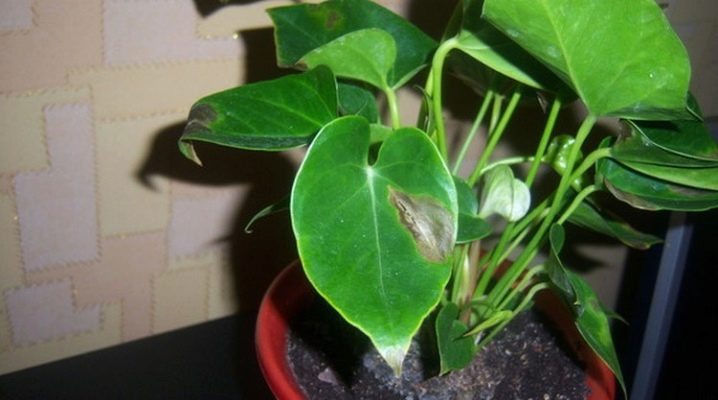
There are indoor plants in almost every apartment or private house. And this is not surprising, because they have many positive properties, qualities and characteristics. Indoor plants are able to create a cozy atmosphere, and, thanks to a variety of shades, add beauty and originality to the room. Also, do not forget that indoor plants have the ability to absorb dust and harmful substances, purify the air and produce oxygen.

There are a lot of types of indoor plants today, you can't remember all of them at once. Some flowers may be familiar and familiar to everyone, while others may be exotic and unfamiliar. They all differ in shape, structure, color, size, flowering and even feng shui meaning. Among all the variety and abundance of indoor plants, I would like to highlight anthurium.
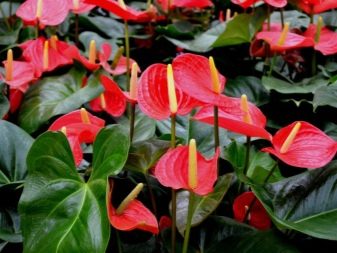
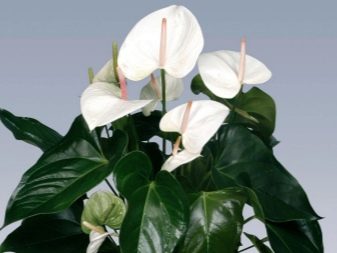
It is a flower of extraordinary beauty, the highlight of which is its broad, shiny leaves and extraordinarily beautiful flowers.
It is often called "male happiness". Anthurium, like any other indoor flower, requires special care, thanks to which the plant will be healthy, strong and will be able to delight the owners with a beautiful view for a long time.
In this article, we will consider such a problem as the appearance of brown spots on the leaves, and tell you how to deal with this scourge.
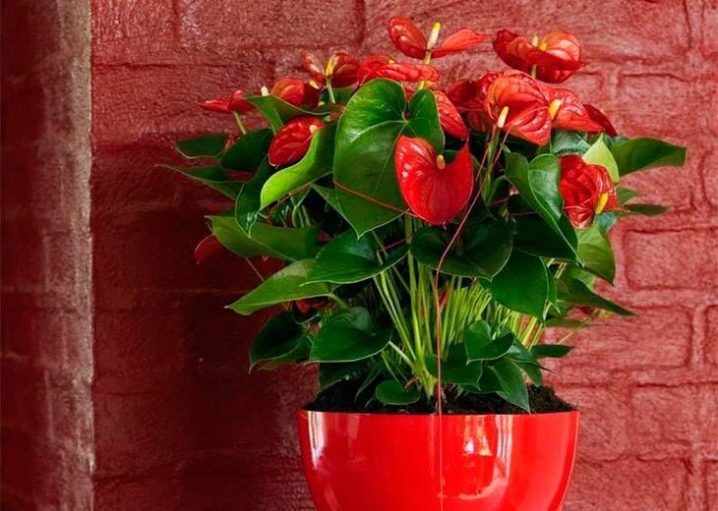
Why do leaf spots appear?
Florist experts say that anthurium belongs to plants that are unpretentious in care, resistant to various pests and diseases. But no matter what these experts say and say, each flower (and anthurium is no exception) is prone to various diseases. The most common problem that arises and is familiar to almost every owner of this indoor plant is the appearance of brown spots on the leaves, as a result of which they dry out.
Those who are not so long ago familiar with this type of plant may immediately have a question about what needs to be done. There can be only one answer: the flower needs to be treated. But before starting treatment, you need to find out the cause of the disease. Of course, if such problems appear, it means that something is not being done the way the plant needs it.
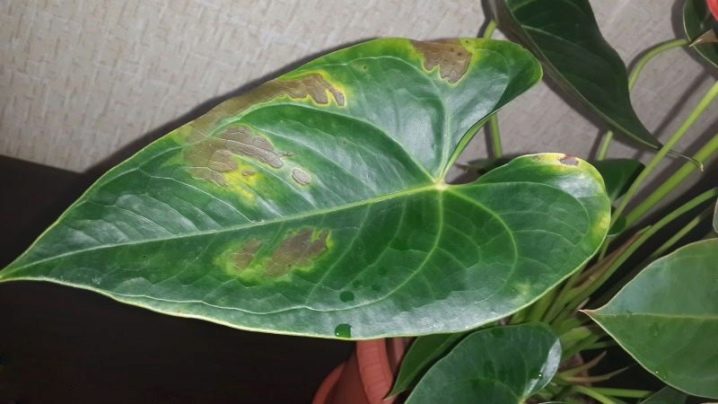
The reasons may be as follows.
- Draft. Anthurium should never stand in a draft (and even get there for a few minutes). During the period of airing the room, it is better to take the plant to another room for a while. Of course, it needs fresh air, so when choosing a location, make sure that the wind does not blow on it even through an open window.
- Climate (temperature) not suitable for the plant. Since anthurium is a thermophilic tropical plant, a summer temperature of 28 ° C is perfect for it, but without direct sunlight. The coolness for the plant is less acceptable. It is strongly not recommended that it stay in a room with a temperature below 22 ºС - this is critical and detrimental to the flower.
- Priming. If the microclimate in which the anthurium lives and grows is ideal for it, but the disease has manifested itself - the leaves are covered with spots, then it is worth looking for the cause in the ground. Any or universal will not work, because the plant is quite unusual.A substrate is suitable for the plant, which can be purchased at a specialized flower shop or ordered online. You can also make soil yourself. This will require chopped moss, peat and turf soil. All components are mixed 1: 1, when landing on the bottom of the pot, it is imperative to put expanded clay or drainage.
- Insects. This refers to the shield. It is a tiny pest that can settle on anthurium leaves and cause stains on them. To exclude or confirm this version, take a good look at the flower. If dots are seen, then it is a parasite. Take the plant to another room urgently so that it does not come into contact with other flowers. In order to get rid of insects, you will need a cotton swab and an insecticide solution. The stick must be moistened in a solution and remove the shield with it. Next, be sure to wipe each sheet. Take a rag, soak it in a soapy solution, to which add kerosene. After carrying out this procedure, let the plant remain separately to stand for several more days. All this time, it must be carefully examined, since the scabbards may not be removed. If so, the procedure will need to be repeated.
- Lack of oxygen for the root system. Its required amount is guaranteed by correct watering, a suitable pot and soil.
- Direct sunlight. This has a detrimental effect on the flower. Putting him on a windowsill under the scorching sun means signing him a death warrant. Choose a place that is light and comfortable for the plant.
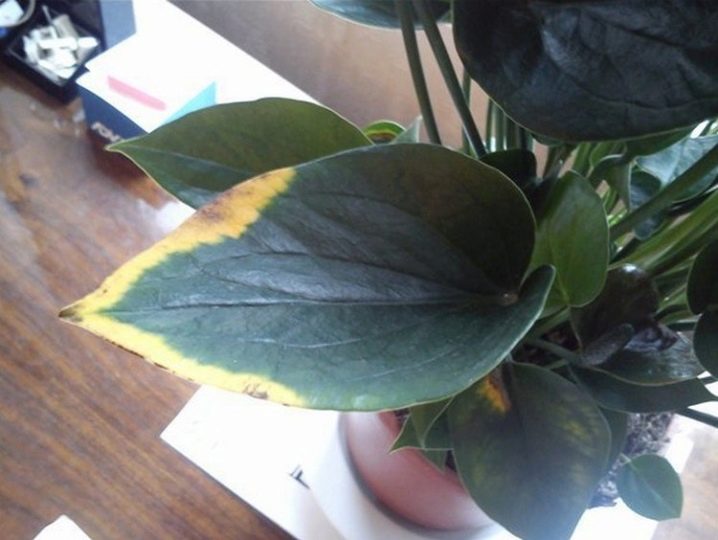
Dark spots on the leaves are an unpleasant situation, because you absolutely do not want the plant to die. The main thing is not to panic and start acting as soon as the problem was discovered, first of all, finding out the cause.
Proper plant care
Anthurium belongs to tropical plants, so it is not surprising that the plant is rather picky about care. You definitely need to know about all the features of caring for this flower. If you adhere to all the rules, then the plant will delight its owners with a very beautiful flowering, which can last for more than 3 months. In order for the atrium to be as comfortable as possible, it needs warmth, light, suitable soil and top dressing.

Here's what you should definitely pay attention to.
- The place where the flower will be located should be bright enough, but not in direct sunlight. The flower does not like shadows. If possible, place it on the west or east side.
- Keep an eye on the air temperature in the room - it cannot be less than 22 ºС. In winter, remove the flower away from batteries and radiators, otherwise the edges of the leaves will begin to dry.
- Watering anthurium also needs to be taken very seriously. The plant loves abundant watering. It cannot be overdried, but it is also not recommended to over-water it. When the topsoil is dry, it means the flower can be watered. The higher the living temperature of the atrium, the more often you need to water it.
- It is better to buy soil for planting a flower in a flower shop, such soil is suitable specifically for anthurium.
- The flower must be fed. In summer and spring, this should be done 2 times a month. Fertilizers are also best purchased at a specialized outlet.
- Anthurium needs to be rejuvenated. In the process of growth, the lower leaves die off and new ones appear. Dry leaves must be removed and the top cut off.
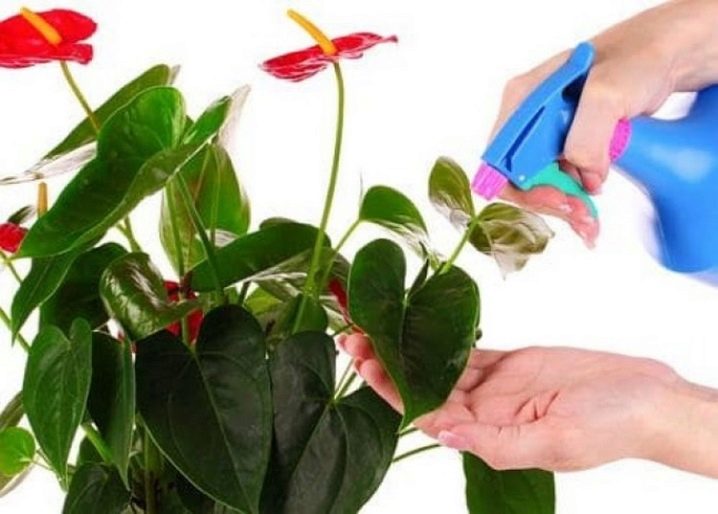
How to propagate a plant?
When anthurium is in an environment suitable for its growth, it, like all other flowers and plants, begins to multiply. This happens by the appearance of small shoots near large plants - "children". Their separation is the most common way to reproduce a flower. It is advisable to do this directly during the transplant. Very carefully, the shoot is separated from the adult plant with a knife, and the cut is rubbed with charcoal.Next, the anthurium is planted in a separate pot according to the technology
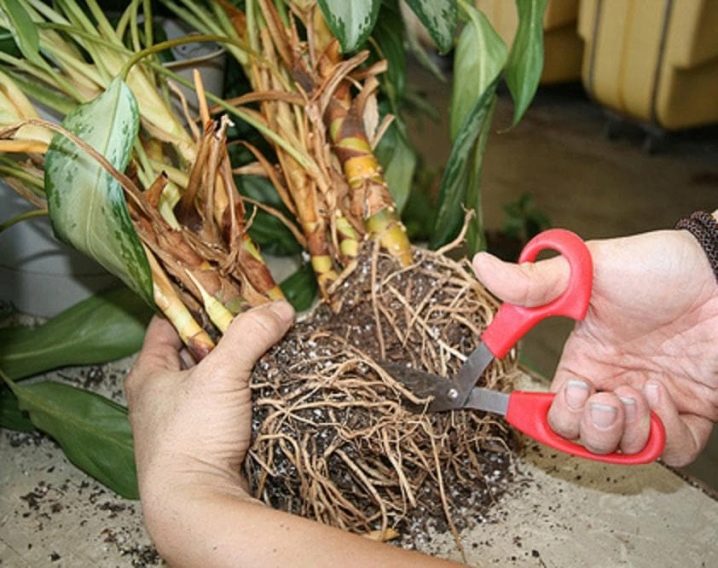
There is another method that involves propagation from the stem. To do this, the stem with the leaf is placed in a container of water, covered with a glass jar to create an air dome. After a while, the stem will take root, then it will need to be planted in a pot.

There are cases of seed reproduction of anthurium, but at home this procedure is extremely laborious and almost impossible.
What to do if anthurium has brown spots on the leaves, see the next video.































The comment was sent successfully.